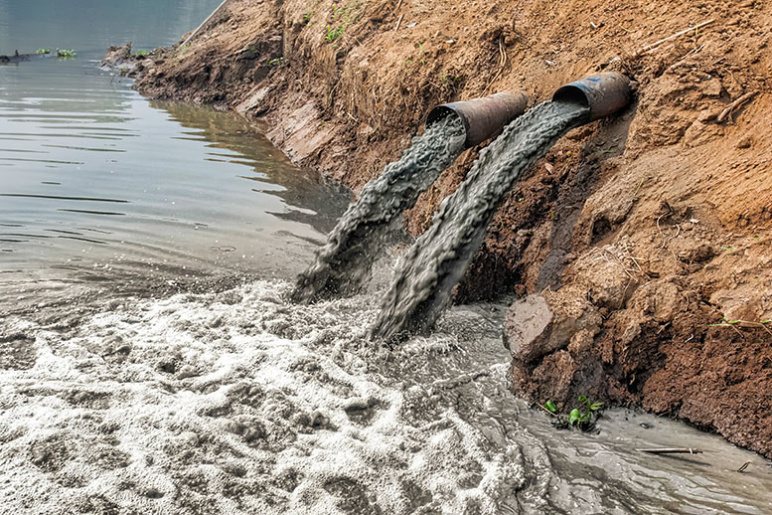Our Research Chemo-electrophilic interfaces for bacterial disinfection in wastewater

Polluted water rushing out of industrial pipes into a river.
Principal Investigators
Challenge:
Can we develop an affordable water disinfection technology that selectively identifies, adsorbs, and kills “superbugs” in domestic and industrial wastewater?
Research Strategy
- Combine material, biological, process, and system engineering principles to design a sponge-based water disinfection technology that can identify and destroy harmful bacteria while leaving the good bacteria unharmed
- Modify the sponge surface with specialized nanomaterials to kill superbugs faster and more efficiently
Project description
O’Neill report predicts that antibiotic-resistance bacteria (ARBs or superbugs) can result in $100 trillion in healthcare expenses and 10 million deaths annually, mostly in children under 5, by 2050. The prevalence of superbugs in our water systems has been increasing due to corroded pipes, contamination, and climate change. Current drinking water disinfection technologies are designed to kill all types of bacteria prior to human consummation. However, these technologies are not suitable to selectively kill superbugs in wastewater for domestic and industrial applications while protecting the good bacterial required for ecological processes, such as soil and plant health. There is an urgent need for affordable water disinfection technologies to selectively remove and/or kill superbugs in the domestic and industrial wastewater.
This project will combine material, biological, process, and system engineering principles to invent sponge-based water disinfection technology for resource-constrained communities. Furthermore, the sponges will be designed to selectively identify, adsorb, and kill the superbugs in the wastewater while leaving the good bacteria unharmed.
News
Additional Details
Impact Areas
- Water
Research Themes
- Water Purification & Desalination
Year Funded
- 2023
Grant Type
- Seed Grant
Status
- Ongoing



